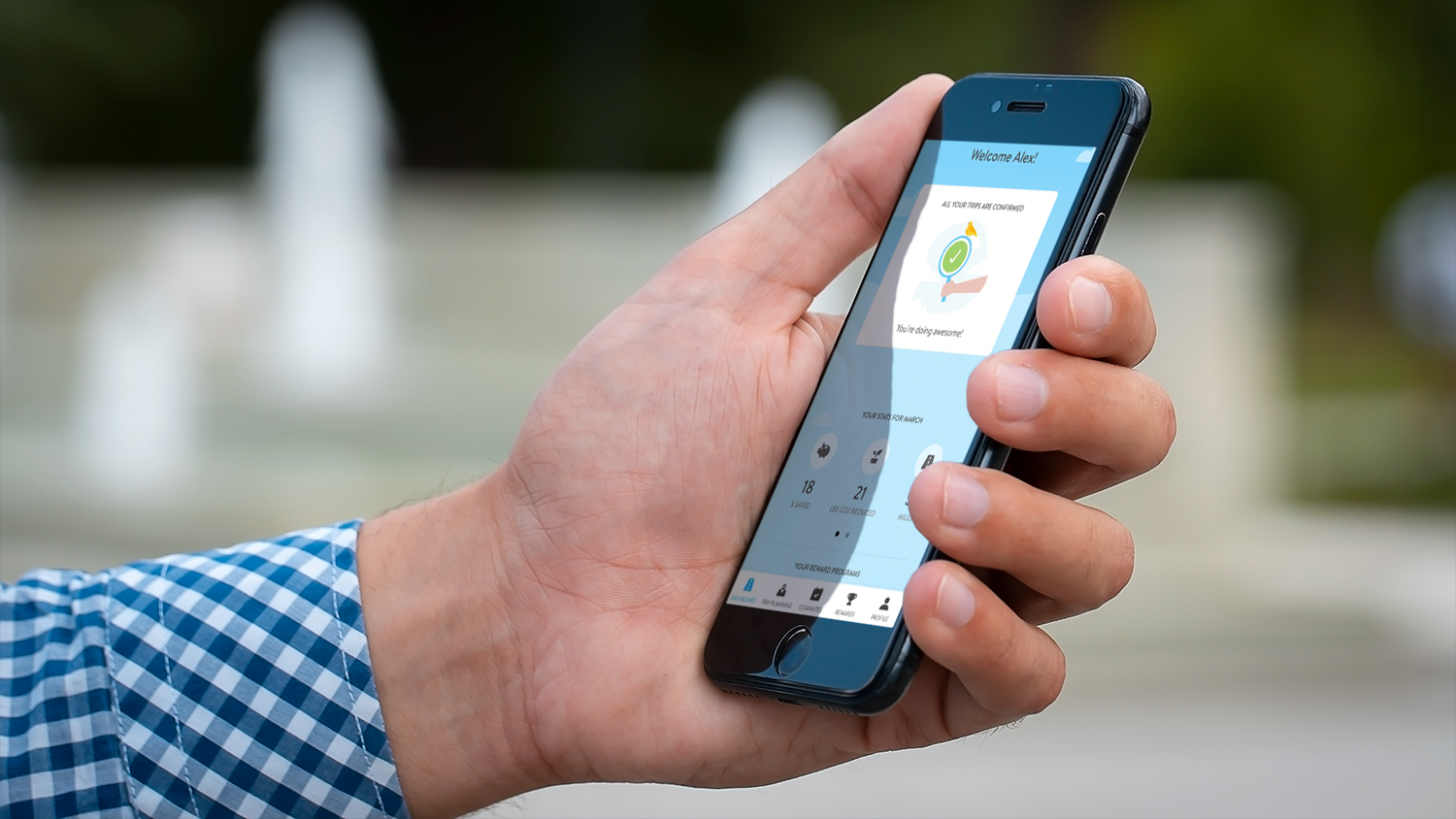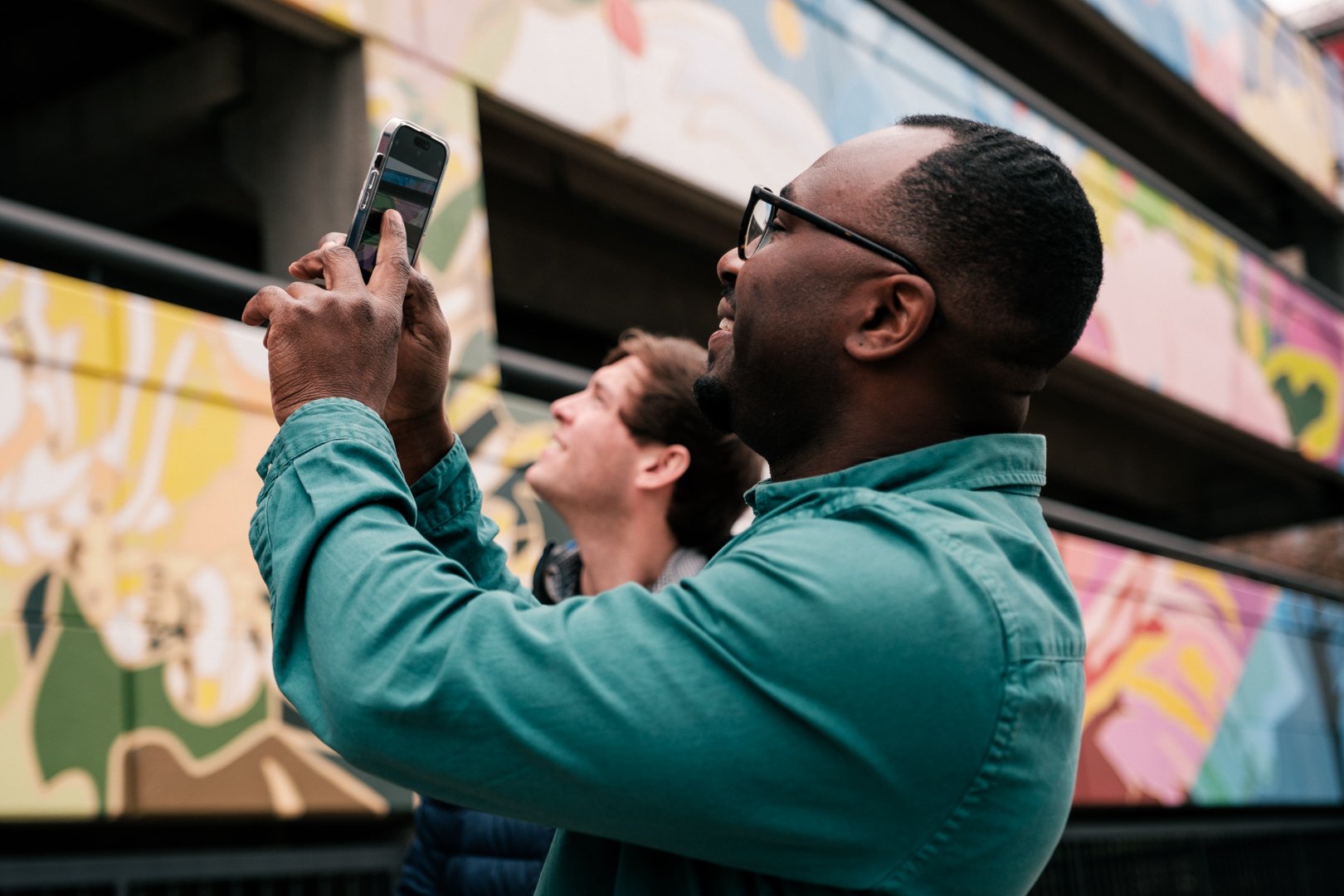Traffic is something many people dislike about their daily commute. It’s a common experience that people tend to be less than excited about. Fortunately for those who work and reside here, the Perimeter business district is home to multiple organizations that actively invest in making it easier to get around. In order to make the most informed decisions over the next few years, a number of these organizations collaborated to conduct a Perimeter District Survey. Conducted earlier this spring, Perimeter Connects worked with local partners to hear from those who work or live in the area about their experiences with commuting. The survey also provided a chance for respondents to share their perceptions about the area and desires for its future evolution. More than 2,400 people participated this year and featured survey responses from employees at major organizations like: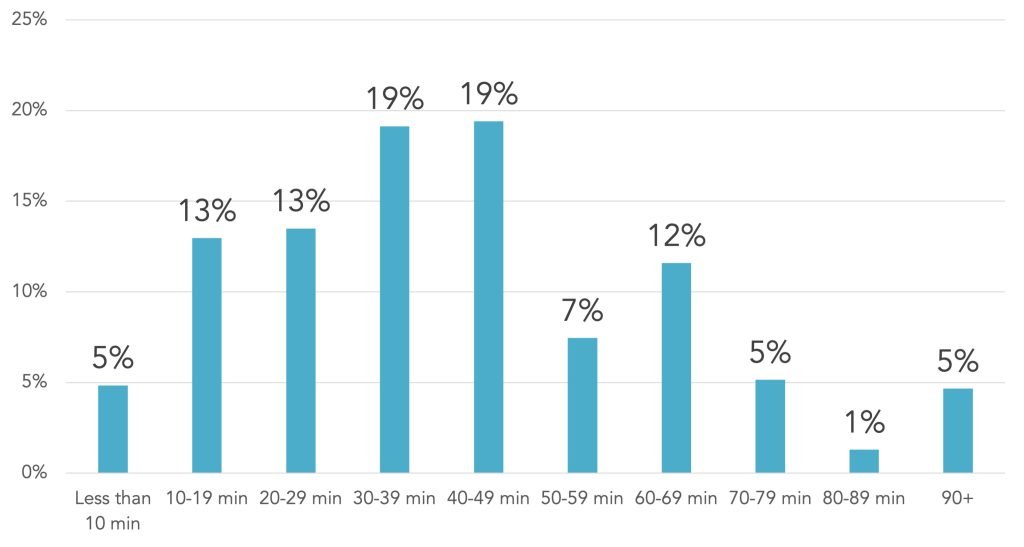
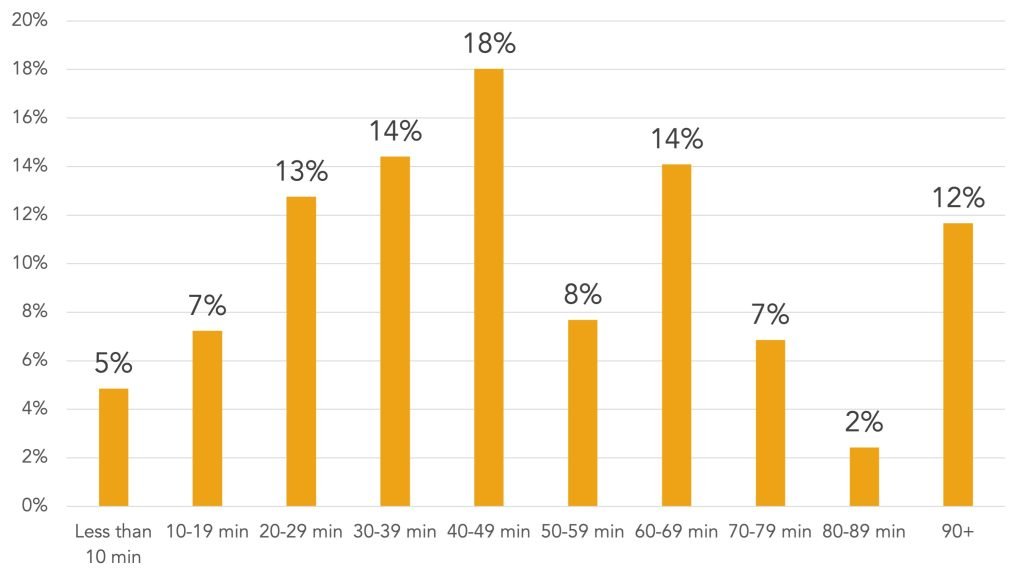 Additionally, 60.5 percent of commuters now drive alone, which is a large decrease from the 78 percent reported in 2018 and 2019. 32.5 percent of work days are now remote. That’s a substantial increase compared to the 5 percent recorded in 2018 and 2019. The pandemic, with its widespread adoption of remote work, has had a transformational impact on solo driving and remote work. Transit commuting has also decreased, with both bus and rail commuting half as common as they were in 2018-19.
Additionally, 60.5 percent of commuters now drive alone, which is a large decrease from the 78 percent reported in 2018 and 2019. 32.5 percent of work days are now remote. That’s a substantial increase compared to the 5 percent recorded in 2018 and 2019. The pandemic, with its widespread adoption of remote work, has had a transformational impact on solo driving and remote work. Transit commuting has also decreased, with both bus and rail commuting half as common as they were in 2018-19. 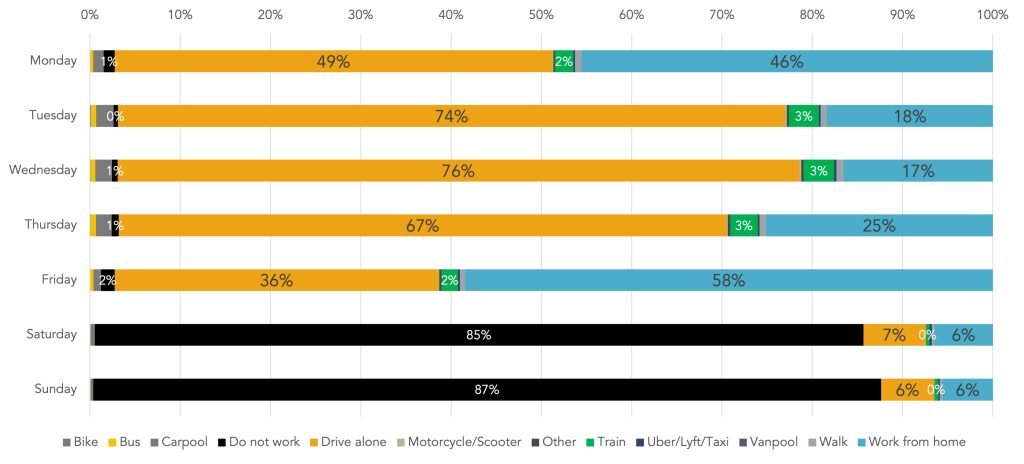 It’s more valuable than ever for individuals to explore alternative transportation options like carpooling and transit passes to optimize their commute experiences and reduce personal costs. Employers can play a vital role by implementing initiatives that give equitable support for transit by providing free or heavily discounted transit passes (since parking is free to employees across Perimeter). We are proud of local leaders like VMware and Northside Hospital for making transit easy and accessible to their employees.
It’s more valuable than ever for individuals to explore alternative transportation options like carpooling and transit passes to optimize their commute experiences and reduce personal costs. Employers can play a vital role by implementing initiatives that give equitable support for transit by providing free or heavily discounted transit passes (since parking is free to employees across Perimeter). We are proud of local leaders like VMware and Northside Hospital for making transit easy and accessible to their employees.  Our team is excited about working with local, regional, and state decision-makers to make use of these insights to make more prudent decisions for future projects and to continue to prioritize efficient and accessible transportation options. By doing so, we can collectively provide better commute experiences, reduce traffic congestion, and minimize the negative impacts of commuting. Want to learn more? Please reach out to us to schedule a time to discuss the survey results.
Our team is excited about working with local, regional, and state decision-makers to make use of these insights to make more prudent decisions for future projects and to continue to prioritize efficient and accessible transportation options. By doing so, we can collectively provide better commute experiences, reduce traffic congestion, and minimize the negative impacts of commuting. Want to learn more? Please reach out to us to schedule a time to discuss the survey results.
- Cox Automotive
- Cox Communications
- Cox Enterprises
- IHG
- Insight Global
- Inspire Brands
- Safe-Guard Products
- State Farm
- T-Mobile USA
- UPS
- VMware
- WestRock
Average Commute Lengths Have Increased, But Commute Times Have Decreased
In recent years, there have been significant changes in the way people commute. Survey results show Perimeter commuters had an average commute length of 20 miles (with a median length of 15 miles). Before the pandemic, the average local commute length stood at 18 miles, indicating a slight increase in how far people travel to work. This data suggests that individuals are living farther away from their workplaces than pre-COVID (possibly due to changes in housing prices or job distribution across the city). At the same time, the average commute time for the surveyed individuals was 40 minutes. Notably, 23 percent of these trips exceeded one hour, meaning a large number of commuters experience long and potentially stressful journeys. In comparison, the average travel time in 2018-19 was 42 minutes in the morning and 50 minutes in the evening – a slight improvement in commute patterns despite the longer commute distance. Broadly, this is a sign of reduced congestion regionally–commutes are still faster than in 2018-19. However, the future potential for greater congestion poses a risk for these long drives.Commute to Work Time

Commute Home Time
 Additionally, 60.5 percent of commuters now drive alone, which is a large decrease from the 78 percent reported in 2018 and 2019. 32.5 percent of work days are now remote. That’s a substantial increase compared to the 5 percent recorded in 2018 and 2019. The pandemic, with its widespread adoption of remote work, has had a transformational impact on solo driving and remote work. Transit commuting has also decreased, with both bus and rail commuting half as common as they were in 2018-19.
Additionally, 60.5 percent of commuters now drive alone, which is a large decrease from the 78 percent reported in 2018 and 2019. 32.5 percent of work days are now remote. That’s a substantial increase compared to the 5 percent recorded in 2018 and 2019. The pandemic, with its widespread adoption of remote work, has had a transformational impact on solo driving and remote work. Transit commuting has also decreased, with both bus and rail commuting half as common as they were in 2018-19. Employer Transit Passes and Carpooling Preferences
A comprehensive look at survey responses reveals that 19.3 percent of the respondents reported their employers offer discounted or free transit passes. However, a significant number of respondents (37.8 percent) were unsure whether such benefits were available to them. In comparison, 42.9 percent stated that their employers do not offer a transit incentive program. The availability of employer-provided transit passes can have quite an impact on commuter behavior and choices. Employees with access to discounted or free transit passes are more likely to consider using public transportation as a viable option, potentially leading to reduced reliance on private vehicles and decreased traffic congestion. These passes can also contribute to a more sustainable commuting culture by promoting public transit, which helps reduce carbon emissions and enhance environmental impact. While carpooling can be a convenient commute option, particularly for longer commutes, there are varying levels of interest among respondents. Among those surveyed, 17.1 percent expressed a definite willingness to drive together and split gas costs with coworkers. In comparison, 49.4 percent responded with a tentative “maybe.” On the other hand, 33.5 percent firmly stated they were not open to the idea of carpooling.Commute Mode
 It’s more valuable than ever for individuals to explore alternative transportation options like carpooling and transit passes to optimize their commute experiences and reduce personal costs. Employers can play a vital role by implementing initiatives that give equitable support for transit by providing free or heavily discounted transit passes (since parking is free to employees across Perimeter). We are proud of local leaders like VMware and Northside Hospital for making transit easy and accessible to their employees.
It’s more valuable than ever for individuals to explore alternative transportation options like carpooling and transit passes to optimize their commute experiences and reduce personal costs. Employers can play a vital role by implementing initiatives that give equitable support for transit by providing free or heavily discounted transit passes (since parking is free to employees across Perimeter). We are proud of local leaders like VMware and Northside Hospital for making transit easy and accessible to their employees. Employees Enjoy Living and Working in the Perimeter District
The insights learned from Perimeter Connects’ surveys provide valuable information that goes beyond purely commuting – the survey also explored important perceptions of the district. Seventy-six percent of survey respondents agreed that the Perimeter District is a safe area (another 18 percent neither agreed nor disagreed), and eighty-eight percent considered it a nice place to live. 87 percent of respondents believe that the District is a nice place to work, and seventy-seven percent agree it has appealing shopping destinations Constructive criticism was also gathered – Only 17 percent agreed that Perimeter has enjoyable recreational options, and 35 percent did not consider it easy to walk around Perimeter.Perceptions of Perimeter
 Our team is excited about working with local, regional, and state decision-makers to make use of these insights to make more prudent decisions for future projects and to continue to prioritize efficient and accessible transportation options. By doing so, we can collectively provide better commute experiences, reduce traffic congestion, and minimize the negative impacts of commuting. Want to learn more? Please reach out to us to schedule a time to discuss the survey results.
Our team is excited about working with local, regional, and state decision-makers to make use of these insights to make more prudent decisions for future projects and to continue to prioritize efficient and accessible transportation options. By doing so, we can collectively provide better commute experiences, reduce traffic congestion, and minimize the negative impacts of commuting. Want to learn more? Please reach out to us to schedule a time to discuss the survey results.
